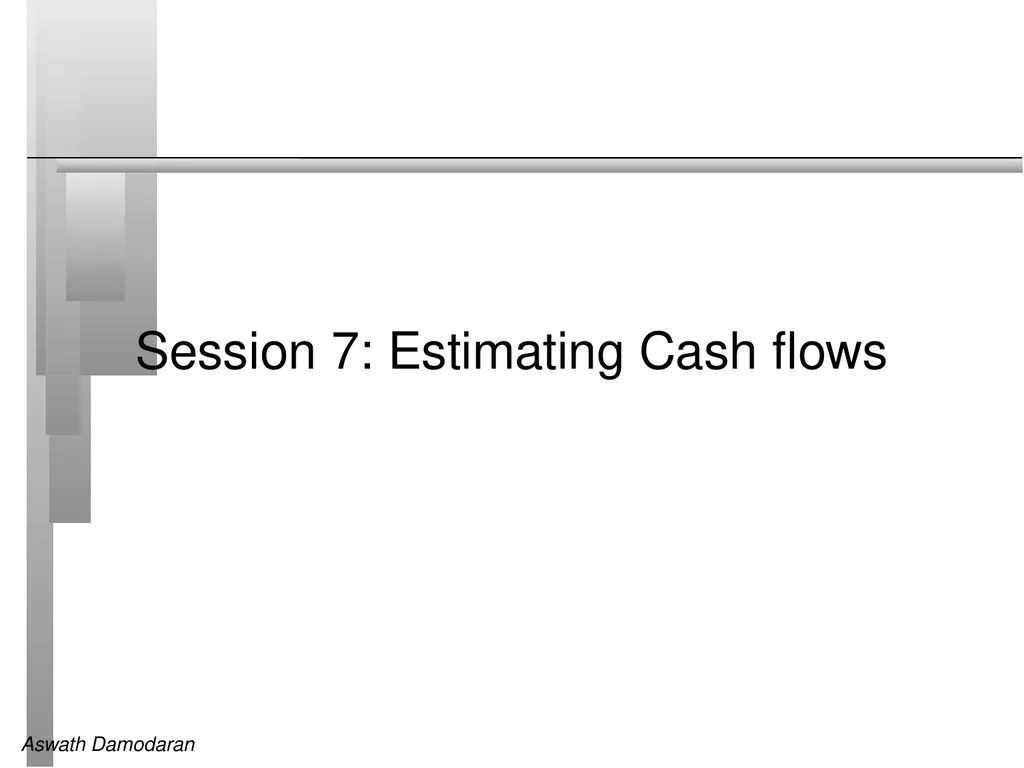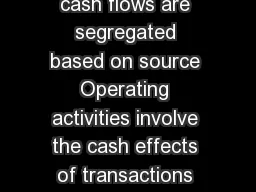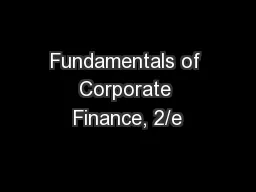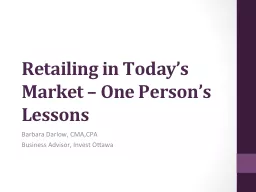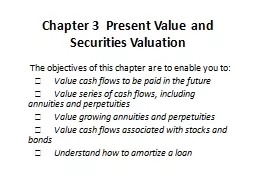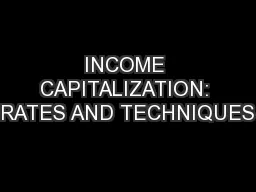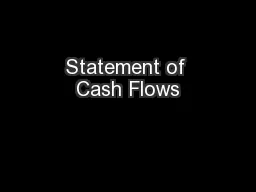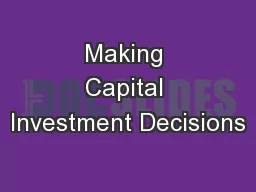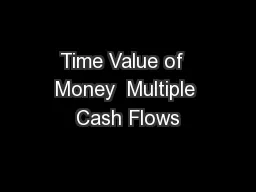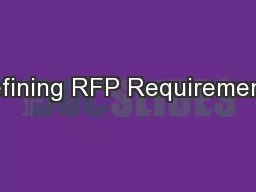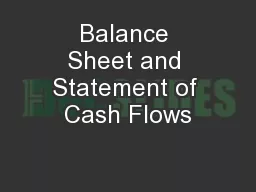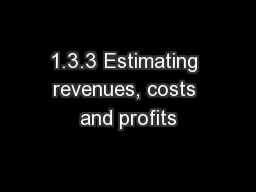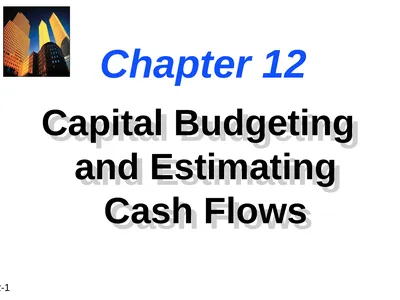Session 7: Estimating Cash flows Defining Cashflow
Author : tatiana-dople | Published Date : 2025-06-27
Description: Session 7 Estimating Cash flows Defining Cashflow The basic ingredients for free cash flows Estimate the current earnings of the firm If looking at cash flows to equity look at earnings after interest expenses ie net income If
Presentation Embed Code
Download Presentation
Download
Presentation The PPT/PDF document
"Session 7: Estimating Cash flows Defining Cashflow" is the property of its rightful owner.
Permission is granted to download and print the materials on this website for personal, non-commercial use only,
and to display it on your personal computer provided you do not modify the materials and that you retain all
copyright notices contained in the materials. By downloading content from our website, you accept the terms of
this agreement.
Transcript:Session 7: Estimating Cash flows Defining Cashflow:
Session 7: Estimating Cash flows Defining Cashflow The basic ingredients for free cash flows.. Estimate the current earnings of the firm If looking at cash flows to equity, look at earnings after interest expenses - i.e. net income If looking at cash flows to the firm, look at operating earnings after taxes Consider how much the firm invested to create future growth If the investment is not expensed, it will be categorized as capital expenditures. To the extent that depreciation provides a cash flow, it will cover some of these expenditures. Increasing working capital needs are also investments for future growth If looking at cash flows to equity, consider the cash flows from net debt issues (debt issued - debt repaid) Step 1: Get your earnings “right” Dealing with Operating Lease Expenses Operating Lease Expenses are treated as operating expenses in computing operating income. In reality, operating lease expenses should be treated as financing expenses, with the following adjustments to earnings and capital: Debt Value of Operating Leases = Present value of Operating Lease Commitments at the pre-tax cost of debt When you convert operating leases into debt, you also create an asset to counter it of exactly the same value. Adjusted Operating Earnings Adjusted Operating Earnings = Operating Earnings + Operating Lease Expenses - Depreciation on Leased Asset As an approximation, this works: Adjusted Operating Earnings = Operating Earnings + Pre-tax cost of Debt * PV of Operating Leases. Operating Leases at Amgen Amgen has lease commitments and its pre-tax cost of debt is 5.63%. It also has $7,402 million in conventional debt. Year Commitment Present Value 1 $96.00 $90.88 2 $95.00 $85.14 3 $102.00 $86.54 4 $98.00 $78.72 5 $87.00 $66.16 6-12 $107.43 $462.10 ($752 million prorated) Debt Value of leases = $869.55 Debt outstanding at Amgen = $7,402 + $ 870 = $8,272 million Adjusted Operating Income = Stated OI + Lease exp this year - Depreciation = 5,071 m + 69 m - 870/12 = $5,068 million (12 year life for assets) Approximate Operating income= $5,071 m + 870 m (.0563) = $ 5,120 million R&D Expenses: Operating or Capital Expenses Accounting standards require us to consider R&D as an operating expense even though it is designed to generate future growth. It is more logical to treat it as capital expenditures. To capitalize R&D, Specify an amortizable life for R&D (2 - 10 years) Collect past
